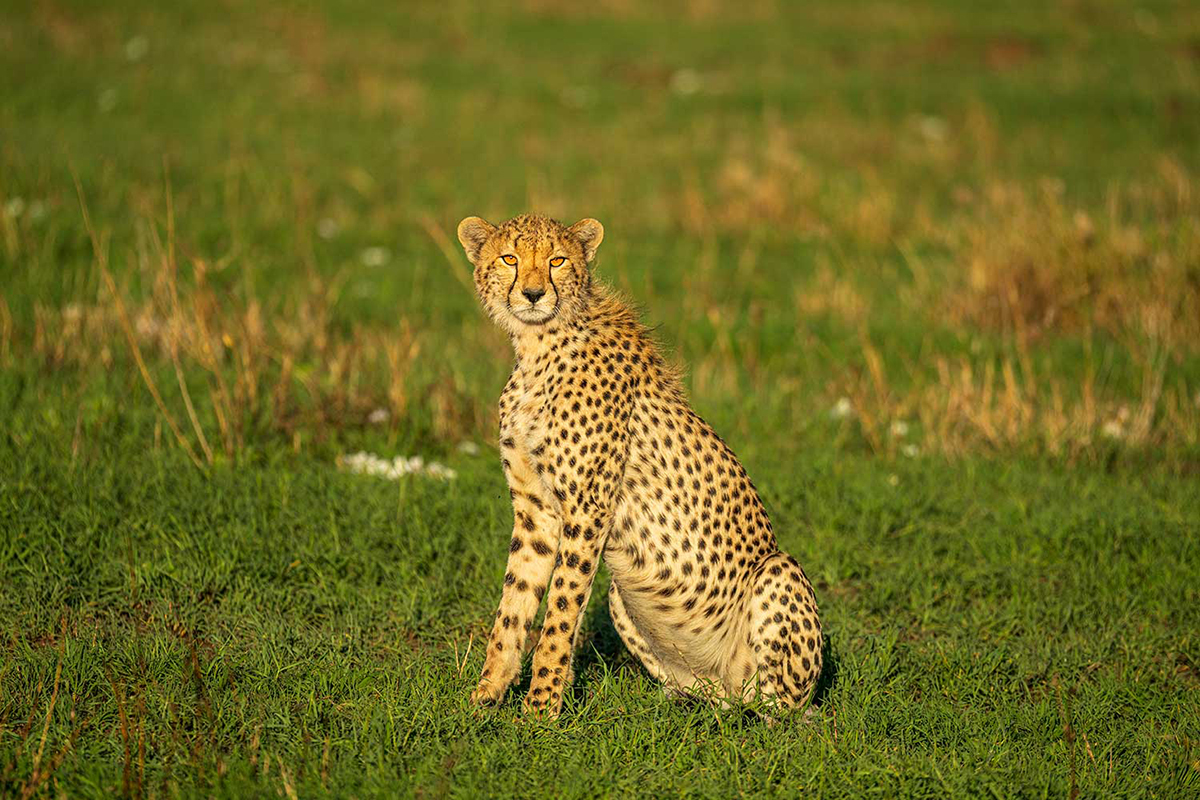Going Ultra-Telephoto in Tanzania
Ian Plant’s Tamron 150-500mm VC lens proved the perfect safari companion in the African wild.
Share the article:
More Photo Tips | Video Gallery | Photo Gallery | Enewsletter sign-up
By Jenn Gidman
Images by Ian Plant
October in Tanzania hits right after peak safari season, but before the country’s short rainy season—an ideal time to capture resident lions, hippos, cheetahs, and other creatures roaming the African savanna. That’s when Ian Plant last visited this resplendent region, hoping to catch the migration of zebras and wildebeests.
“October is typically one of the months where you can capture decent photos of these migrations, but unfortunately, local conditions altered the pattern, so I didn’t have much luck,” he says. “We visited three areas, however, where there was plenty of wildlife: Tarangire National Park, Serengeti National Park, and the Ngorongoro Conservation Area.”
Along for Ian’s (often bumpy) ride: the Tamron 150-500mm Di III VC VXD ultra-telephoto lens for his Sony mirrorless camera system. “The versatility and reach of that lens is critical when you’re on safari,” he says. “Sometimes you’re relatively close to the animals, other times you’re much farther away, so you need a lens that can adapt on the fly. Plus, because I’m shooting on a Sony full-frame 60MP camera, when I switch to APS-C mode, I get a crop factor of 1.5, effectively giving me a focal length of up to 750mm. That’s an invaluable asset for distant or smaller subjects.”
At 8.3 inches long and weighing in at just under 61 ounces, the 150-500mm is also light and compact enough to shoot handheld. “This is a very portable lens and light enough so I can carry it around all day,” Ian Plant says. “Plus, because stability can often be compromised on the rugged Tanzanian terrain, the Tamron 150-500mm’s Vibration Compensation (VC) feature was invaluable. With a heavier lens, I’d usually try to give it some external support, like with a beanbag, but I didn’t have to resort to that in this case.”
IAN’S SAFARI PHOTOGRAPHY GUIDE
Capitalize on the light.
Early morning and late afternoon are the best times for safari photography—not only because that’s when many species are most active, but also because the light is warmer and more appealing for photos. I’m sure if I captured this close-up of a lion in the middle of the day it would’ve still been an interesting photo, but there’s something special about the way that golden glow of the early morning sun lights up the edges of its mane.
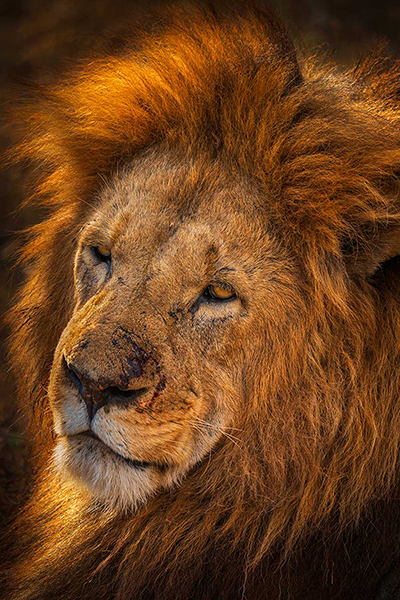
150-500mm (500mm), F6.7, 1/500 sec., ISO 640
Click image to view larger
Take advantage of the moment.
You might only have a few minutes, or even seconds, to capture a photo before you lose your shot. That’s why the Tamron 150-500mm lens is so terrific—it offers me creative options. For instance, when I spotted a mother elephant with her baby, they were quite close to us, and I wasn’t able to zoom out for an environmental shot of both. Instead, I zoomed in and focused on the mother’s face, making sure to focus on her eye. You can see how sharp the lens is here, highlighting every detail in the texture of her skin.
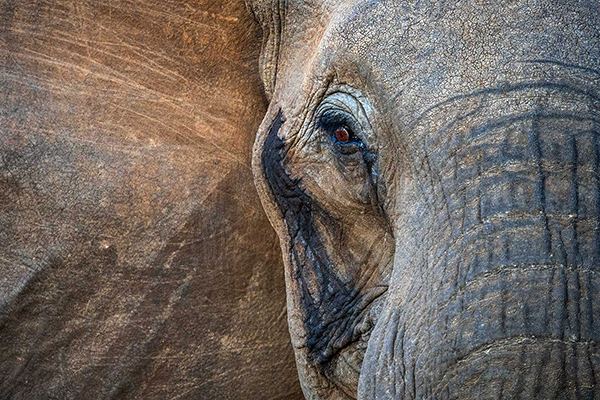
150-500mm, APS-C mode, 500mm (750mm equivalent focal length), F6.7, 1/500 sec., ISO 2000
Click image to view larger
Not all of your photos need to be action shots.
The allure of the wild lies not just in adrenaline-pumping pursuits but also in the quiet interludes. I witnessed a near-encounter between a mother cheetah, her two cubs, and a pack of hyenas approaching the cubs. However, the hyenas became intimidated when the cheetahs stood up. The hyenas backed off, and I didn’t get any kind of dramatic interaction, but I was able to capture this portrait of one of the hyperalert cubs.
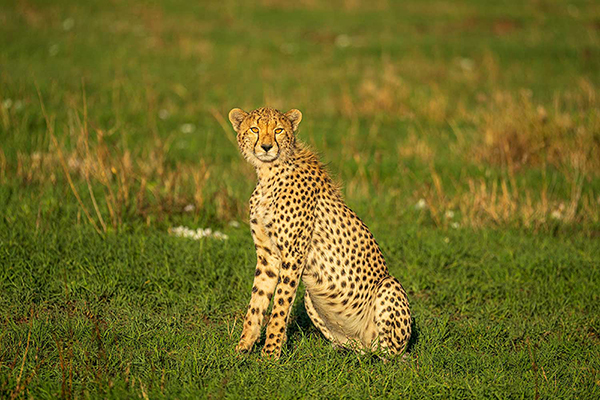
150-500mm (467mm), F6.3, 1/800 sec., ISO 320
Click image to view larger
Be flexible in your photographic goals.
The adage "hurry up and wait" finds its truest expression in safari photography guides. One of the events I witnessed was a hunt, where a pride of lions encountered a zebra herd. The lions stalked the zebras for 30 minutes, but the zebras were too far away, and that photo opp fizzled out. But, during that kind of downtime, scan for other types of photos, like this picture I took of the acacia trees along the savanna’s horizon. That’s what I love about the Tamron 150-500mm lens. It’s versatile enough that I can zoom in to take wildlife close-ups, then pull out for wider shots.
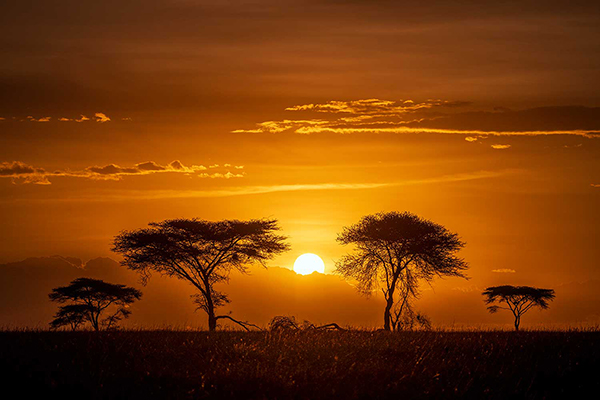
150-500mm (189mm), F11, 1/4000 sec.,ISO 100
Click image to view larger
Don’t get discouraged at naptime.
You’ll see a lot of animals resting when you’re on safari, especially during hotter parts of the day. Patience remains key. If you wait for a bit with your camera on the ready, you’re likely to see an animal stretch, lift its head up for a yawn, or subtly shift its position in a way that makes for a more compelling photo. This bloat of lounging hippos may have seemed humdrum at first glance, but there was something so intriguing about their eyes—especially the matriarch giving me the side-eye.
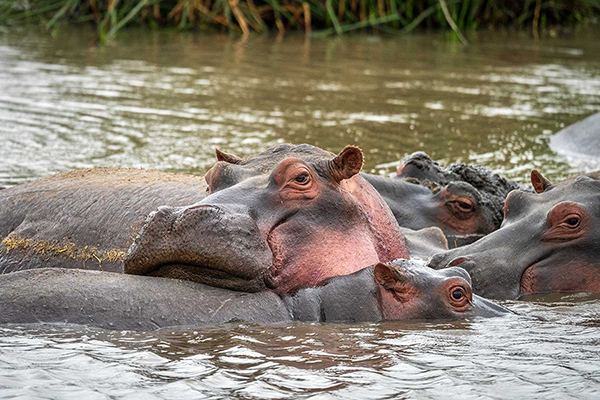
150-500mm (500mm), F6.7, 1/640 sec., ISO 1600
Click image to view larger
To see more of Ian Plant’s safari photography guide and work, check out his website and Instagram.
Is your Tamron News subscription up to date? Click to subscribe to all editions of Tamron News featuring how-to tips, new product news, contest announcements and inspiration!
More Photo Tips | Watch Videos | Learn More About Tamron Lenses | Photo Gallery
